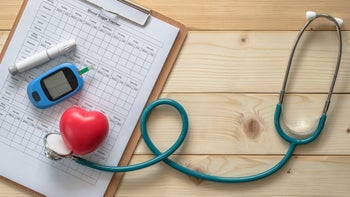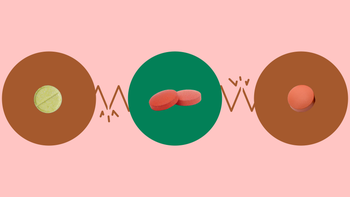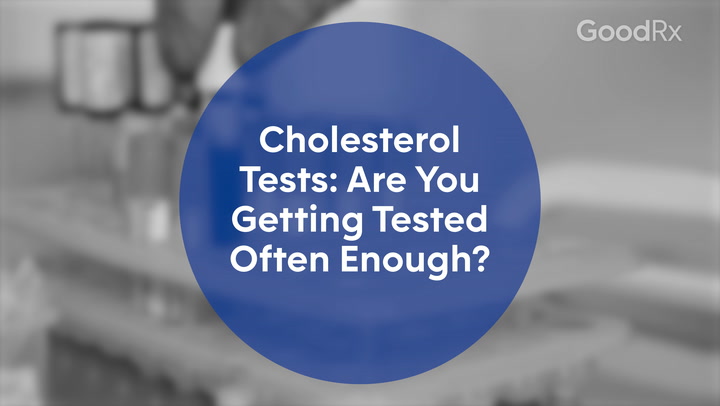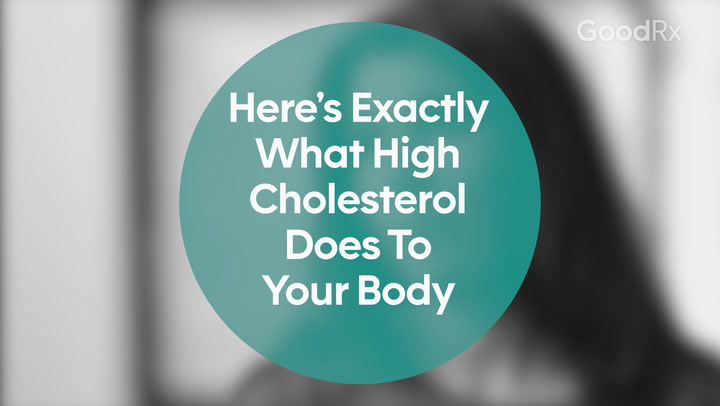
Echocardiogram: What It Shows About Your Heart and How to Read Your Results
Key takeaways:
An echocardiogram is a specialized ultrasound scan of the heart.
It gives detailed information about how efficiently the heart pumps blood and oxygen to the organs and how well the heart valves work.
A trained and qualified cardiologist (heart specialist) needs to read an echocardiogram to know if the results are normal or not.

An echocardiogram (echo), or cardiac ultrasound, is a test that uses high-frequency sound waves to capture moving pictures of the heart. It’s like a sonogram of a developing baby — except it’s of the heart.
In an echocardiogram, a small transducer (probe) sends sound waves toward the heart. The sound waves then bounce back and are collected and processed by a computer. The computer generates a series of videos and measurements of the heart structures and movements. This gives information about the health of the heart muscles and valves and how well the heart is pumping (the ejection fraction). A cardiologist (heart specialist) reviews the results.
You may need an echocardiogram if you have symptoms like chest pain, shortness of breath, or swelling in the legs. You may also need an echocardiogram if your healthcare provider hears an abnormal heart noise or “murmur.” That’s the sound that blood makes as it passes through the heart chambers and valves. An echocardiogram can provide you and your healthcare team with valuable information about how well your heart is functioning.
Fast, affordable ED treatment from GoodRx
Build a personalized treatment plan and get erectile meds delivered discreetly. Subscriptions start at just $18/mo.

GoodRx is NOT insurance. Cancel anytime. GoodRx Health information and resources are reviewed by our editorial staff with medical and healthcare policy and pricing experience. See our editorial policy for more detail. We also provide access to services offered by GoodRx and our partners when we think these services might be useful to our visitors. We may receive compensation when a user decides to leverage these services, but making them available does not influence the medical content our editorial staff provides.
Types of echocardiograms
Not all echocardiograms are the same. Depending on your symptoms and the heart problems your provider is looking for, there are a few different types of echocardiogram that can help:
Transthoracic echocardiogram (TTE): A TTE, or surface echocardiogram, is the most common type of echo. A trained professional places a small probe on the front of the chest and moves it around to get pictures of the beating heart.
Transesophageal echocardiogram (TEE): A TEE uses similar ultrasound technology but looks at the heart from the inside of the body (not the outside). The echo probe is on the end of a flexible tube that goes down the throat and into the esophagus, similar to an endoscopy. This lets the probe get closer to the heart and get details about certain parts of the heart that a surface echocardiogram can’t pick up.
Stress echocardiogram: This is a surface echo that looks at how much blood flow the heart muscle receives before and right after someone exercises on a treadmill or bike.
In addition to sound waves generating moving pictures of the heart, there are other techniques that can show details about how the heart is working. For example, a Doppler looks at blood flow through the heart. Depending on what color it shows up as, the person reading the test can see the direction in which blood is moving.
Instead of stressing the heart with exercise, it’s possible to inject medication to stress the heart while taking moving images of the heart under pressure.
Finally, your provider can inject contrast into your veins and heart to light up the heart and provide a more detailed look at the structures of the heart during the echo.
How long does an echocardiogram take?
An echo can take between 20 to 60 minutes. The total time depends on a few different things, including the:
Type of echo
Experience of the person performing the echo
Difficulty of the procedure
Number of abnormalities it finds
Number of measurements needed
Read more like this
Explore these related articles, suggested for readers like you.
A TTE can take as little as 20 minutes. A TEE can take 1 hour and sometimes even longer.
After the procedure, a cardiologist carefully reviews the images from the echo and describes the findings in a detailed report. So it can take a few days to a week to receive the results of your echocardiogram.
How do you read or interpret your echocardiogram report?
The main part of the echocardiogram report describes the structures of the heart in detail and provides a brief summary of the cardiologist’s findings. A typical echocardiogram report is very detailed and uses technical terms to describe heart structures and function.
It’s very normal to not fully understand the medical terms in an echocardiogram report. But your provider will be able to provide more information about what the results mean.
What does an echocardiogram show?
Each echocardiography lab has a slightly different way of reporting results.
Here’s the most common information in an echocardiogram report.
1. The indication for the test
This is the reason your healthcare provider ordered the test in the first place. It matters because it helps the person performing the test know what to look for and which heart structures and findings to comment on (even if they are normal).
Here are some common abnormalities that healthcare providers look for when ordering an echo:
Heart failure (or pump weakness)
Valve disease, including infective endocarditis (infection on the valves)
Heart muscle diseases (cardiomyopathy)
Evidence of blood clots (in the heart or lungs)
Evidence of a heart attack
Fluid or inflammation in the lining around the heart
Congenital heart abnormalities
2. The size, thickness, and movement of the heart muscles
This includes an assessment and description of the size of the heart chambers and appearance of the heart muscle walls. This is where the report may comment on large heart chambers or thick muscle walls.
The person performing and reading the test will look at how well the heart chambers move together — both during a heart contraction (systole) and relaxation (diastole). Both phases of the heartbeat are important. The heart needs to fill with blood during relaxation and pump out blood efficiently during contraction. The appearance of the heart at this stage in the test will determine what the person doing the test looks for next (and in how much detail).
3. Ejection fraction
This is a measurement of how well the left and right ventricles are working and how much blood they pump out on each beat of the heart.
Ejection fraction (EF) is expressed as a percentage (%) — the percentage of blood that is pumped out of the filled left ventricle with every contraction of the heart. A normal ejection fraction is between 50% and 70%. This means the left ventricle pumps out between 50% and 70% of its total volume. An ejection fraction between 40% and 49% is considered “borderline.”
Because of the position of the heart in the chest, usually it’s not possible to estimate an accurate EF for the right ventricle with a TTE. You may just see an assessment like “normal” or “reduced.”
4. The heart valves
There will be a detailed description of the shape, movement, and function of the heart valves. These are flaps of tissue that control the flow of blood through the heart and in and out of the major blood vessels that exit the heart (the aorta and pulmonary artery).
Normal valves open freely and close completely with every heartbeat. An echocardiogram report describes the appearance and function of each of these valves:
Aortic valve: the valve between the left ventricle and the aorta
Mitral valve: the valve between the left atrium and left ventricle
Tricuspid valve: the valve between the right atrium and right ventricle
Pulmonic valve: the valve between the right ventricle and pulmonary artery
The echo measures how well the valves are working. Regurgitation refers to leaky valves. Stenosis means they’re too stiff. You can get regurgitation and stenosis of each of these main valves in the heart. A small amount of regurgitation can be normal. But moderate to severe regurgitation or stenosis need further investigation and treatment.
5. Other echocardiogram findings
You’ll see some other information on your echocardiogram report. This will relate to important structures in and around the heart, like the large arteries and veins as well as the lining of the heart (the pericardium). This also includes whether or not there are any abnormalities, like blood clots.
An echocardiogram report should include a comment on:
The size and appearance of the main blood vessels (aorta, pulmonary artery, and inferior vena cava)
An estimate of the pressure in the pulmonary arteries, the blood vessels supplying blood to the lungs (right ventricular systolic pressure)
Whether or not there is a pericardial effusion (fluid in the sac surrounding the heart)
Whether or not there is a pleural effusion (fluid in the bases of either or both lungs, which is a sign of heart failure)
The presence of any congenital heart abnormalities
The presence or absence of blood clots in the heart chambers or any abnormal growths
How is an echocardiogram different from an ECG?
An echo is different from an electrocardiogram (ECG). An ECG is a recording of the electrical activity of the heart.
An echocardiogram, unlike an ECG, provides a very detailed image of the heart muscle and heart valves. And it provides information about how blood flows through the different parts of the heart and major blood vessels.
Can an echocardiogram detect a heart attack?
Usually, but not always. A heart attack occurs when a part of the heart muscle does not get enough blood flow and oxygen. And it can cause permanent damage to the heart muscle. If the area of damaged heart muscle is large, then it can look like it’s not contracting or moving normally on the echocardiogram. This is called a regional wall motion abnormality. It may also be described as hypokinesia, dyskinesia, or akinesia.
But, if the heart attack was mild, an echocardiogram may not be able to detect it.
Will an echocardiogram show whether you have heart failure?
Heart failure describes a situation in which the lower chambers of the heart (the ventricles) are not filling and/or pumping as efficiently as they should be. An echocardiogram can diagnose several types of heart failure.
Left-sided heart failure
The left side of the heart receives oxygenated blood from the lungs and pumps it to the rest of the body. When there are problems with the heart muscle of the left ventricle, or pumping chamber of the heart, it can result in left-sided heart failure.
There are two types of left-sided heart failure:
Heart failure with reduced ejection fraction (HFrEF): If the ejection fraction of the left ventricle is less than 40%, the ejection fraction is reduced. This means that oxygen-rich blood is not pumped out of the left ventricle efficiently. HFrEF can occur when you have cardiomyopathy or a prior heart attack.
Heart failure with preserved ejection fraction (HFpEF): The ejection fraction of the left ventricle is normal, but the heart muscle does not relax properly when the ventricle is filling. If the ventricle doesn’t fill properly, there is less oxygenated blood to pump out to the rest of the body. This condition can also be called “diastolic heart failure.”
Right-sided heart failure
Sometimes the right ventricle — the chamber that pumps blood to the lungs to receive oxygen — does not contract properly. This can occur with severe lung disease or a pulmonary embolism. Right-sided heart failure can happen by itself or together with left-sided heart failure.
What should you avoid doing before an echocardiogram?
Unlike other procedures, there’s nothing special you need to do or avoid doing before a cardiac echo. Depending on the type of echo, your provider may ask you to hold some of your heart medications or to avoid caffeine before the procedure. If you're having a TEE, then you’ll probably need to avoid eating and drinking for several hours beforehand.
It’s always best to check to be sure. But if you haven’t received any special instructions and you’re having a standard TTE, it’s safe to assume you can just show up.
For any medical procedure, it’s always a good idea to leave any valuables, like jewelry, at home.
What happens if your echocardiogram is abnormal?
First, do not panic! There are many cases in which an echocardiogram report describes mild abnormalities, which may have no impact on your overall health or life. If the echo picks up any significant issues, your provider will discuss these with you. They will explain what these could mean and what needs to happen next.
Sometimes, it’s enough just to monitor abnormalities over time, with repeat echocardiograms. In other situations, you may need some follow-up testing, like another type of echo or an MRI scan.
If you’re concerned in any way about your echo results, make sure you have an appointment to discuss these with your provider. It’s important to understand what the information means for you.
The bottom line
An echocardiogram is a very safe test that can give you and your providers a wealth of information about your heart muscle, chambers, and valves. The results will be summarized in a very detailed report that contains multiple measurements of your heart’s structure and function. It’s important to schedule a time to discuss the results of the echocardiogram with your provider. That way, you can fully understand what the report means for you.
Why trust our experts?


References
American Heart Association. (2015). Transesophageal echocardiography (TEE).
American Heart Association. (2017). Ejection fraction heart failure measurement.
American Heart Association. (2017). What is heart failure?
American Heart Association. (2020). Problem: Heart valve regurgitation.
American Heart Association. (2020). Problem: Heart valve stenosis.
American Heart Association. (2022). Echocardiogram (echo).
American Heart Association. (2022). What is a heart attack?
American Heart Association. (2022). What is cardiomyopathy in adults?
McAlister, N. H., et al. (2006). Understanding cardiac ‘echo’ reports. Canadian Family Physician.
Suzuki, K., et al. (2018). Practical guidance for the implementation of stress echocardiography. Journal of Echocardiography.





























